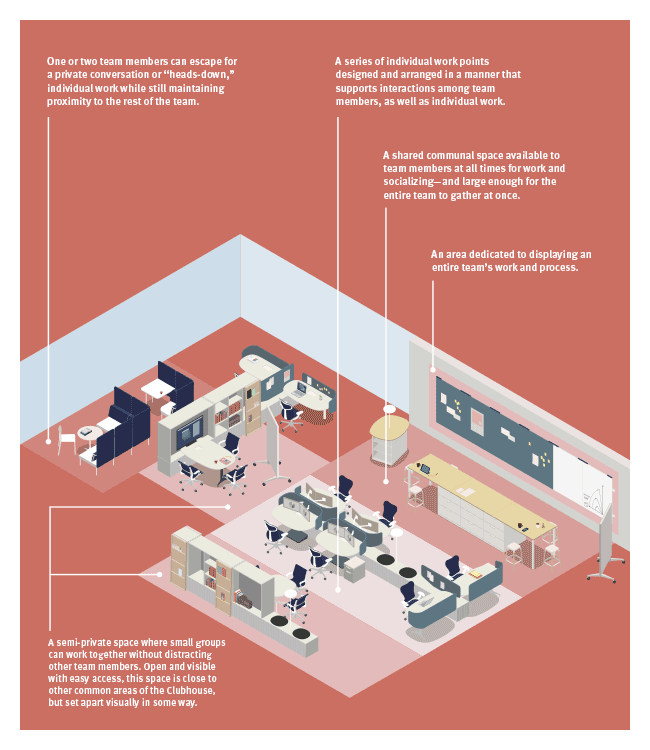How Do You Make Space For Collaboration?
In the workplace, the creative teams improvise like jazz musicians
Jazz is equal parts structure and improvisation. Creative teams toggle back and forth between following a process and making it up as they go.
How well musicians collaborate on stage is as important as the individual contributions of each performer. The quality of team work is also a combination of their individual talents and their dynamic as a team.
A creative team, like a jazz ensemble, tackles problems with undefined outcomes. The path forward is often fuzzy and undefined.
How do you design space for a process that's unpredictable by nature?
Team space needs to strike a balance between the needs of the team and the individuals within it
Creative teams migrate between a variety of close-knit spaces. On any given day, they ebb and flow between team meetings, small group check-ins and head down work done in solitude. The boundaries between social time and work time are nebulous.
Creative teams work in close proximity to keep things moving seamlessly. Their day is made up of dozens of cues and micro-collaborations. They communicate intuitively, often in shorthand only the team understands.
To maximize collaboration, work in progress is kept in the open and shared frequently. This way team members stay up to date and ready to contribute at the drop of a hat.
From observing 8 very different collaborative teams at work, we defined 5 distinct Activity Zones which support the natural flow of their work.
Activity Zones support the natural ebb and flow of team work
The Hive is the home of the individual work and quick, impromptu micro-collaborations happen. The Epicenter is the living breathing center of their space. The Walls are the team’s collective memory bank and a canvas for works in progress, shared feedback and new ideas. When privacy is paramount, Coves and Havens provide space for seclusion and concentration.
This research informed Clubhouse, a furniture system that supports the collective and individual needs of collaborative teams
In 2015, Clubhouse was featured at NeoCon, North America’s largest furniture show, and is now a permanent feature of Herman Millers’ Living Office System.
In addition to Living Office design, the research has been incorporated into knowledge pieces and white papers written by the Herman Miller team, including "The Vital Link Between Improvisation and Innovation".
To read about NeoCon 2015 and Clubhouse, check out Work Design Magazine's behind the scenes review.
NeoCon 2015, Herman Miller showroom, Chicago, IL





